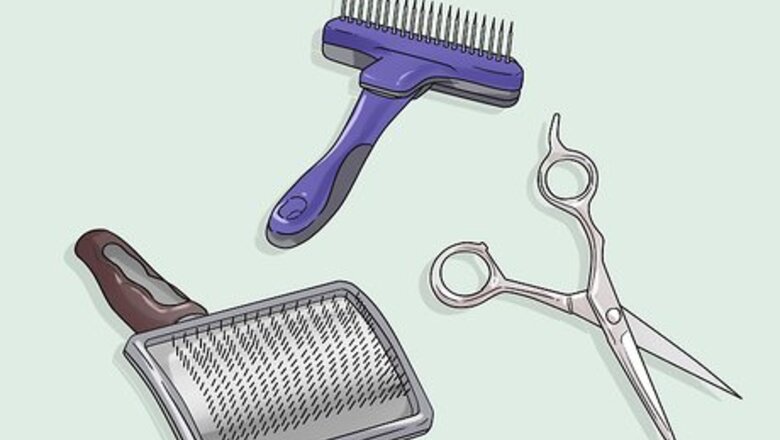
views
Brushing Your Dog
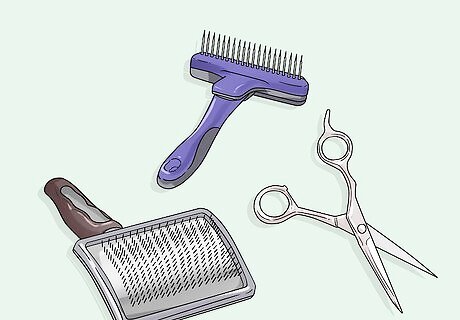
Purchase the proper tools. Bernese mountain dogs have double coats: an undercoat and a long topcoat. Having high-quality brushing tools will help you effectively brush both coat layers. You should purchase: A slicker brush for general brushing A rake comb for detangling and combing out matted fur Scissors for cutting out large matts
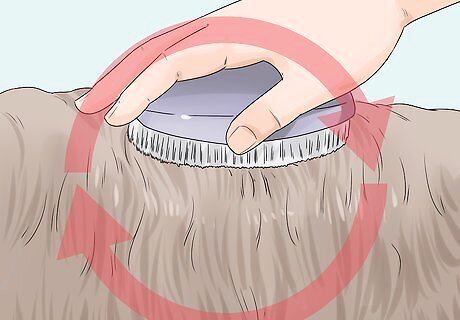
Brush your dog several times a week. Bernese mountain dogs can shed a lot, especially when they live indoors. Regular brushing can help keep the shedding under control. Plan to brush your Bernese mountain dog every couple days. Bernese mountain dogs typically blow their coat twice a year when the weather changes. You may need to brush your dog more frequently during these times Because your dog has so much fur, it will be easier to brush the coat layers in small sections. This will make brushing take longer, but will ensure a thorough brushing.
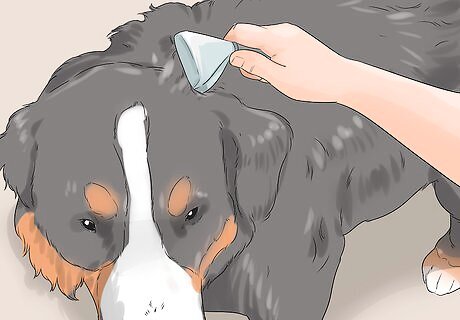
Comb through your dog’s fur first. Your dog’s coat may have some matts in it. These matts are knots of hair that got stuck in the undercoat. Use your rake comb to comb through the undercoat and topcoat. Consider using a detangling spray, which will loosen the matts. Purchase this spray at your local pet store. If the matts are too big to comb through, cut them out with the scissors. Don't yank and pull to get the matts out. This will hurt your dog make grooming a negative experience for it. If your dog seems to be prone to matted fur, consider taking them to a groomer. They may recommend an all-over haircut to make the matting less likely.
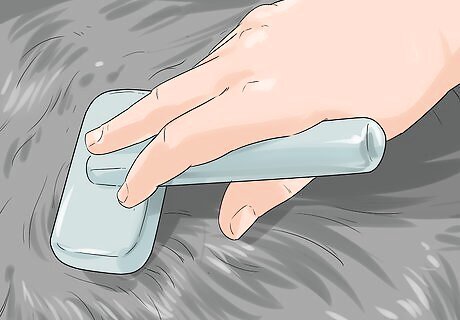
Brush the coat with a slicker brush. Use the slicker brush after combing your Bernese mountain dog’s coat. Brushing with the slicker brush will distribute healthy skin oils through your dog’s coat, making it look healthy and shiny. Brush in the direction of hair growth.
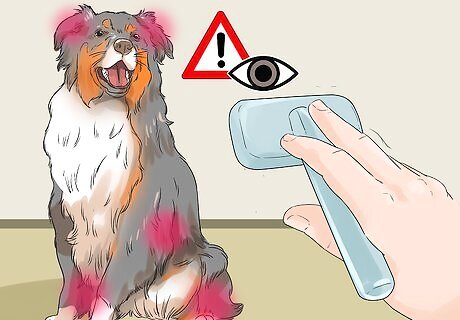
Pay attention to sensitive and easy-to-miss spots. Some areas of your dog’s coat will need extra attention and care. For example, spend extra time brushing the chest fur, since it’s long. Also, don’t skip over the fur on the tummy and inner thighs. Here are some other tips: Brush the hair behind the ears carefully, since it’s soft and can easily get matted. Use a comb to groom the hair on the legs. Brush the tail last.
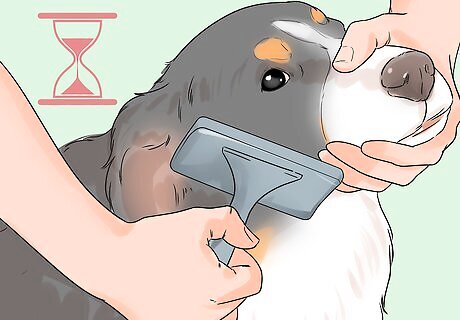
Gently brush the face. Your dog may not be too keen on having its face groomed. However, the face is also important to brush. Use your slicker brush to gently brush your dog’s face. Use extreme care around your dog’s eyes.
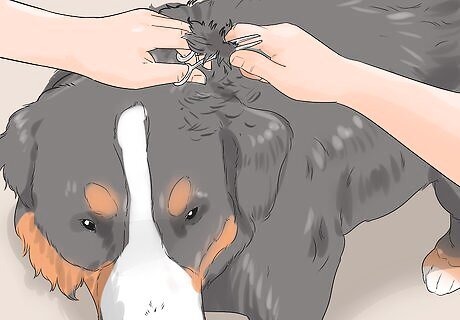
Trim long hairs. The long hairs in different parts of a Bernese mountain dog’s body should be trimmed, but not too much. Focus on trimming the hair in these areas: Between the foot pads Fur around the foot, to give the foot a nice shape Long streams of hair on the ears
Bathing Your Dog
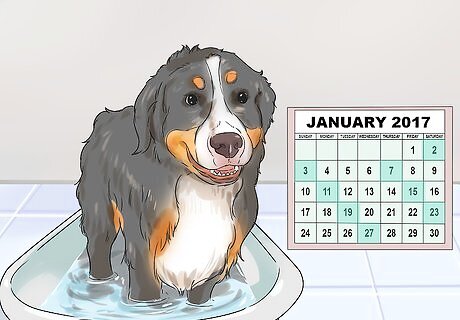
Bathe your dog only occasionally. Because a Bernese mountain dog’s coat sheds dirt so easily, this dog breed does not need baths very often. You’ll know your Bernese mountain dog needs a bath when it starts to smell. Too-frequent bathing can dry out your dog’s skin. Always brush your dog before bathing. Brushing will help get rid of excess hair and allow you to remove matts that could become impossible to manage when the fur is wet.
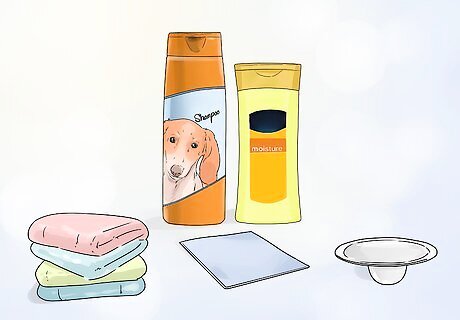
Organize your bathing supplies. Bathing your Bernese mountain dog will take a lot of effort. Make sure you have the right supplies to make the bath worth the effort. Below are the supplies you’ll need: Dog-safe shampoo Non-slip bath mats Regular or moisture-absorbent towels Hair catcher to cover the tub's drain
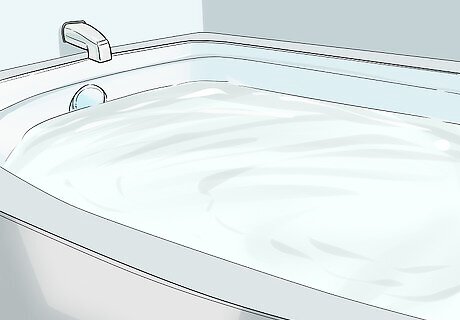
Run lukewarm water in the tub. Large breed dogs like Bernese mountain dogs can easily overheat. To keep your Bernese mountain dog from overheating during the bath, put a few inches of lukewarm water in the tub. Place the non-slip mat in the tub before running the water. This mat will give your dog some traction so it doesn’t slip during the bath.

Keep your dog’s ears dry. Moisture in the ear canal can cause ear infections in dogs. To prevent water from getting into your dog’s ears during the bath, put a few pieces of clean cotton balls in each ear. Put them down far enough so they won’t fall out easily if your dog shakes its head from side to side. Protecting the eyes is important, too. Purchase sterile eye lubricant and apply it to your dog’s eyes. To keep the lubricant sterile, do not touch the tube’s tip with your fingers and do not touch the tip directly to the eye.
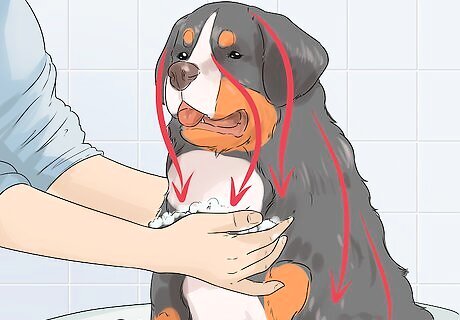
Work the shampoo through your dog’s coat. After getting your Bernese mountain dog wet, use your fingers to gently massage the shampoo into your dog’s coat. Start at the back of the neck and work your way down to the tail. Then, shampoo your dog’s belly, chest, and legs. Make sure you get the shampoo all the way down to the skin. Talk to your dog in a gentle, yet playful voice as you bathe them. This will help make the bath a pleasant experience for both of you. Your dog will not want water to get on its face. Dampen a clean wash cloth with water and gently rub your dog’s face. Be careful around their eyes.
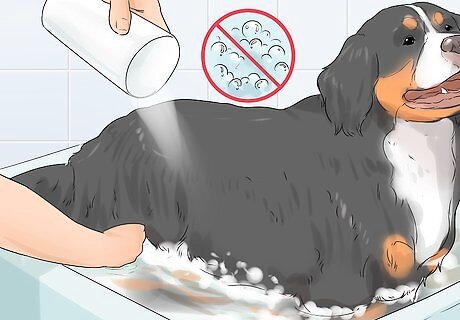
Rinse your dog off thoroughly. If you think shampooing your dog takes a long time, wait until it’s time to rinse! It may take 30 to 40 minutes to get all the shampoo out of your dog’s coat. Don’t rush through this step. Your dog’s skin will get irritated if you don’t rinse out all the shampoo. You’ll know all the shampoo is out when you no longer see suds as you run your fingers through the coat.
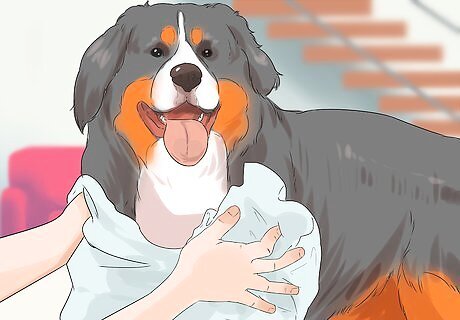
Dry off your dog. Your dog will be soaking wet after its bath, so you’ll need a lot of towels to dry it off. Moisture-absorbent towels are ideal because they dry dogs off more effectively than regular bath towels. In addition to towels, you can dry off your dog with a dog-safe hair dryer. Ask a pet groomer or your vet for recommendations on high-quality doggie hair dryers.
Caring For the Teeth, Nails, and Ears
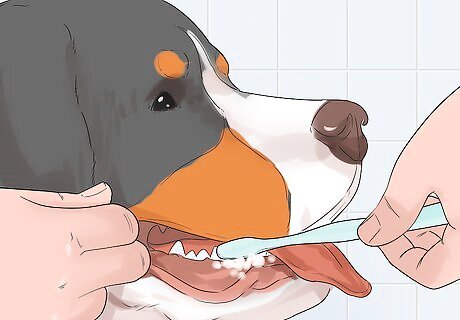
Brush your dog’s teeth. Good dental hygiene is essential to a dog’s overall health. Brush your dog’s teeth daily if possible, or at least two to three times a week. Pick up a dog-safe toothbrush and tube of toothpaste at your vet’s office. Follow a few tips to brush the teeth: To get your dog comfortable with teeth brushing, rub your finger all along its teeth. Then, touch the toothbrush (without toothpaste) to each tooth. Next, put some toothpaste on your finger and let your dog lick it off. When your dog’s comfortable, gently brush the teeth. Go from the outside of the front teeth to the back teeth. You don’t have to clean the inside of the teeth if your dog doesn’t like it. Praise your dog so they know teeth brushing is a positive experience.
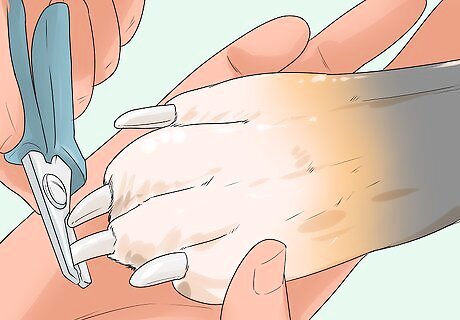
Trim your dog’s nails. Keeping your dog’s nails nicely trimmed is another important grooming task. Trim the nails about once a month. To properly trim the nails: Choose between guillotine- and scissor-type trimmers. Although they’re both effective, guillotine trimmers may be easier for you to use. Hold only one nail at a time. Position the trimmer so you cut the nail at an angle that matches the nail’s natural curve. Trim to just above the quick, the pink vein running through the nail. The quick is easier to see in light-colored nails. If your dog has dark nails and you cannot see the quick, start by clipping the nail little by little. As you get closer the the quick, you will notice the white spot at the center of the nail begin to darken. This can be a good cue to stop clipping. It is a good idea to have styptic powder on hand so that if you do clip the quick on accident, you can quickly stop the bleeding. Styptic powder should be available at your local pet store. After trimming all the nails, file them with an emery board (available at your local pharmacy) to smooth out the rough edges.
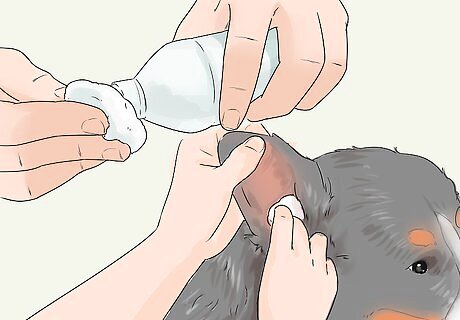
Check and clean your dog’s ears. Keeping your Bernese mountain dog’s ears clean and healthy is also important. Your vet can recommend an ear cleaner for your dog. Dampen a cotton ball or cloth with the ear cleaner and gently wipe in your dog’s ears. Do not use a Q-tip to clean the ears. Check the ears at least once a week for signs of ear problems, like redness or bad odor. These signs could indicate an ear infection. If you see these signs, take your dog to your vet.




















Comments
0 comment